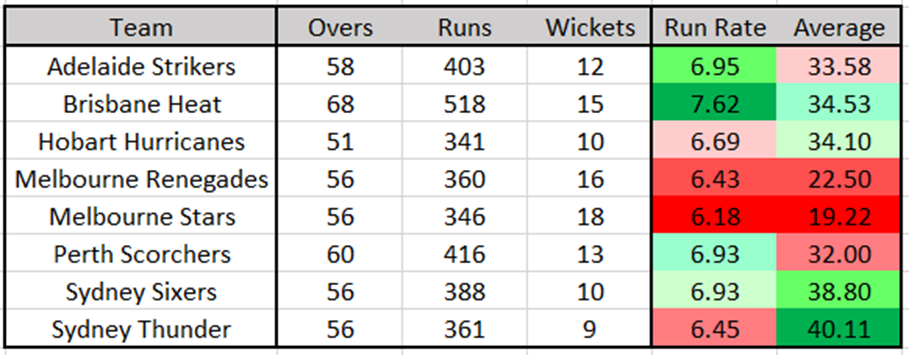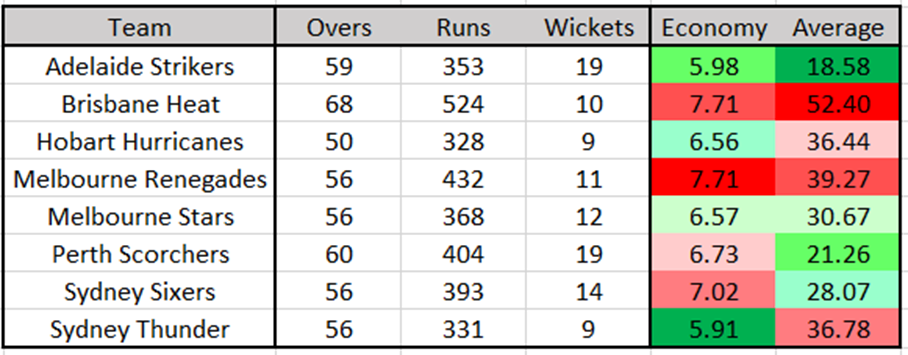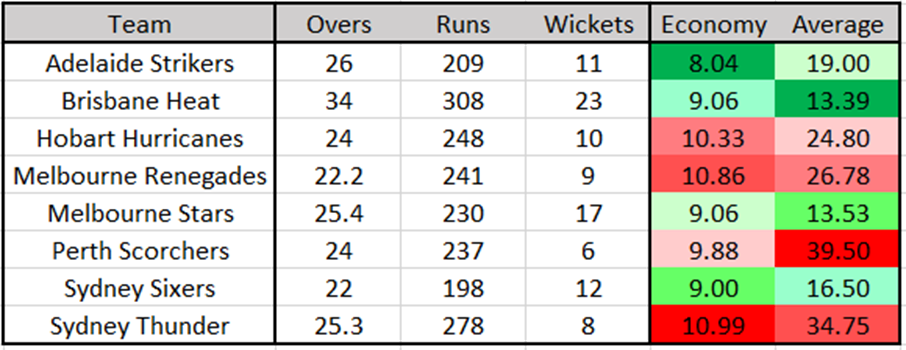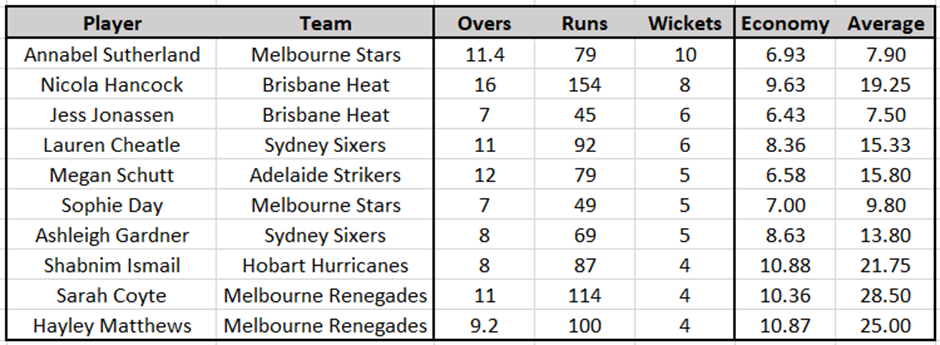By Ronan Alexander
Adelaide Strikers claimed their second WBBL title after defending 125 and winning by three runs in a nail-biting final against Brisbane Heat earlier this month. Strikers were the standout side in the competition, whilst there wasn’t much to split the rest of the teams as only four points separated second top and second bottom in the league table. These small margins have a big part to play in these types of formats in making it to the knockout stages, so I wanted to take a deeper look into some areas where these small margins can be crucial. During the powerplay and power surge.
The powerplay in T20 cricket is predominantly the first six overs of the innings, but in the WBBL, it is the first four overs, then the batting side can choose when they would like to use their remaining two powerplay overs, known as the ‘power surge’. The surge is most frequently taken during the second half of the innings when the batting side try and get two set players at the crease to exploit the fielding restrictions. It is mostly used around overs 15-17, then the final death overs can be capitalised on with more hitting. What makes the surge unique is that the bowling side need to use more death bowling plans during a powerplay scenario. Up front in the early powerplay, we’ll normally see some swing and seam movement, bowlers hitting hard lengths and batters looking to smash it over the in-field. However, the surge tends to feature yorkers, slower balls, bouncers and cutters with only two fielders outside the ring.

Powerplay batting

Brisbane Heat were the fastest scoring side in the batting powerplay, whilst also maintaining the third best average. Grace Harris had a large part to play in this as she averaged 35 and struck at 144 during this phase. Other standout performers were Lauren Winfield-Hill of Perth Scorchers (ave 74, SR 121) and Elysse Perry of the Sydney Sixers (ave 121 SR 144).

Melbourne Stars were the weakest side in the batting powerplay – looking like one of the main reasons why they missed out on qualifying for the knockout phase. Their first four overs scores included some disappointing totals of 14/4, 20/3 and 15/2.
Powerplay bowling

Adelaide Strikers were the best team with the new ball, restricting teams to under a run-a-ball whilst taking wickets the most regularly. Sydney Thunder were the most economical side but failed to take wickets as frequently. Melbourne Renegades and Brisbane Heat were the main strugglers with the new ball.

Chloe Ainsworth and Kim Garth led the wicket taking tally in the powerplay with 8, whilst Megan Schutt had 7, Hayley Matthews and Marizanne Kapp grabbed 6 whilst Sophie Devine, Lauren Cheatle and Nicola Hancock had 5.
Power Surge batting

Sydney Thunder were the standout team with the bat in the surge as Heather Knight, Tahlia Wilson and Pheobe Litchfield all excelled. Perth Scorchers were also aggressive, scoring at over 10 runs per over, with Sophie Devine boasting some outstanding numbers and was backed up by Amy Jones. Sydney Sixers were the main strugglers, with Hobart Hurricanes and Adelaide Strikers also failing to achieve 9 runs per over.

Power Surge Bowling

Despite their success with the bat, Thunder leaked the most runs with the ball in the surge, with the Renegades and Hurricanes also going at over 10 runs per over. Adelaide were the most economical with Megan Schutt being their main standout surge bowler. Brisbane Heat took wickets in the surge most regularly, with Hanock and Jonassen being their most efficient combination. Annabel Sutherland was the leading wicket taker in the surge, taking 10 wickets and only went at 6.93 runs per over. Renegades also struggled as they stuck with Coyte and Matthews to bowl in this phase and neither were overly effective, both going at over 10 runs per over and averaging more than 25.

Powerplay stats: Cricmetric
Power surge stats: tracked manually (do forgive me for any errors!)
